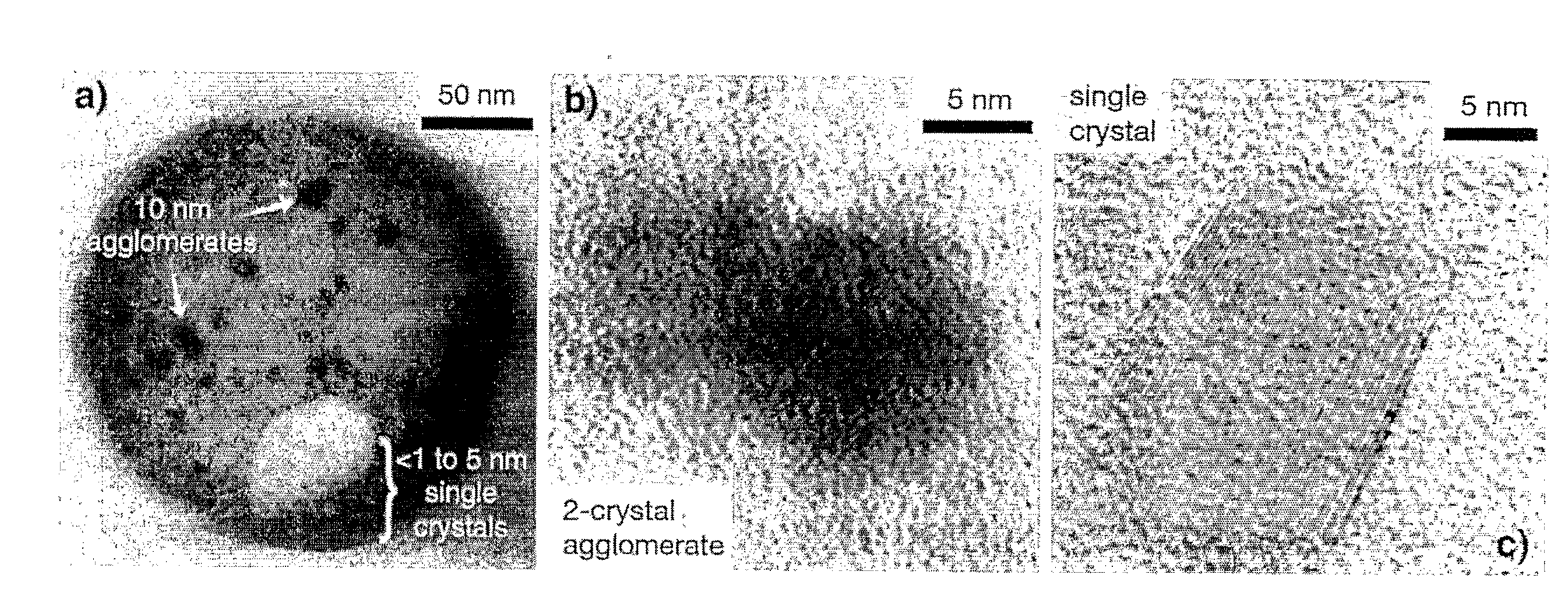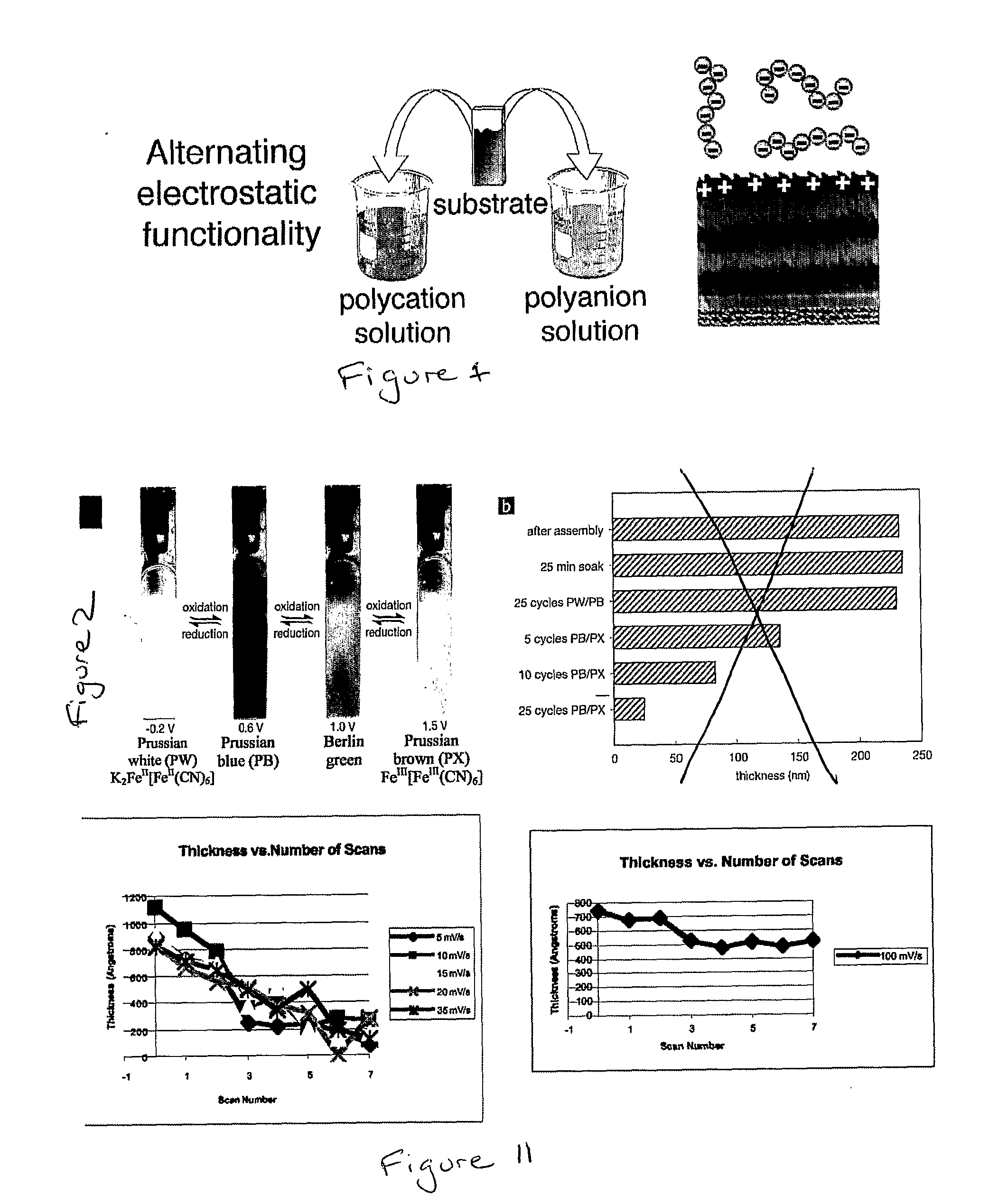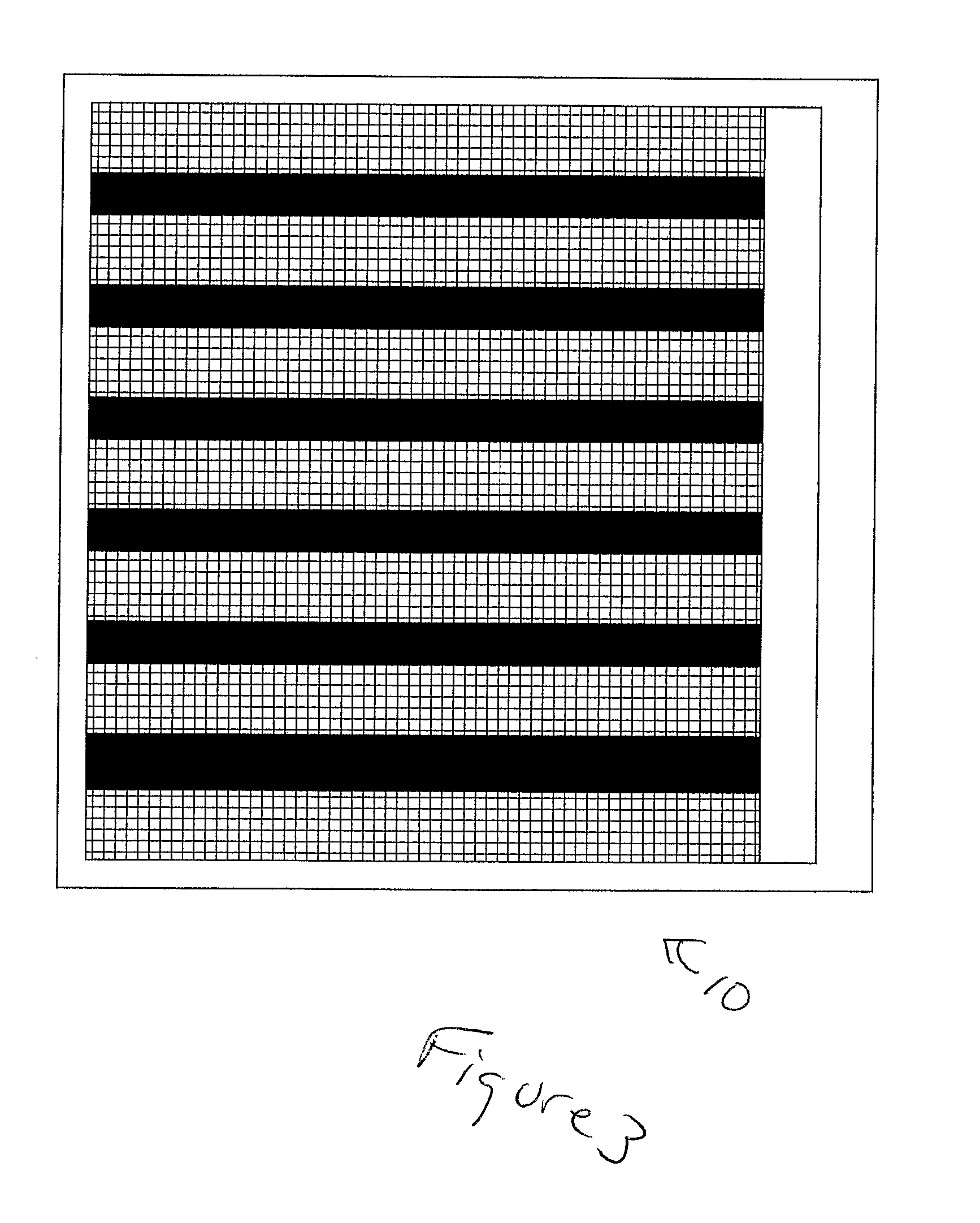Electronically-Degradable Layer-by-Layer Thin Films
a technology electron-degradable layer, which is applied in the field of layer-by-layer thin film, can solve the problems of multiple surgeries, risk of missed medication, and one of the most difficult challenges in the world of drug delivery
- Summary
- Abstract
- Description
- Claims
- Application Information
AI Technical Summary
Benefits of technology
Problems solved by technology
Method used
Image
Examples
example 1
Production of Prussian Blue
[0064]Based on analogy to polymer step-growth mechanisms, stoichiometric parity between reactants is a condition for large, uniform crystal growth (though the analogy is not exact because PB synthesis is a heterogeneous phase polymerization). If the reactant ratio is adjusted to include a large excess of a single reactant, it is possible to reduce crystal size. Our recipe employed a 5:1 molar ratio of potassium ferricyanide to iron(II) chloride. The simple reaction is shown in FIG. 4, with intercalated potassium ions within the crystal omitted for clarity. PB was synthesized by the addition of 35 mL of a 0.01 M aqueous solution of FeCl2 (Aldrich) dropwise to a 35 mL solution containing 0.05 M potassium ferricyanide (Aldrich) and 0.05 M KCl. After complete addition, the liquid was vigorously agitated for 1 min and then immediately subjected to ultrafiltration against a 3000 Da regenerated cellulose membrane to remove the large excess of potassium ferricyani...
example 2
Production of PB / LPEI Multi Layers
[0066]The anionically ionized PB suspension was LBL assembled with the weak (pH-sensitive) polycation linear poly(ethylene imine) (LPEI) at pH 4. We have previously shown that LPEI can increase ionic conductivity by two orders of magnitude over LBL films assembled using other weak polycations in films used as the solid or gel electrolyte layer in electrochemical power storage devices.[18] LPEI was therefore chosen for assembly with PB to capture this benefit for acceleration of electrochromic switching speed.
[0067]Aqueous solutions containing dissolved polycation LPEI (Poly-sciences MW 25 k) were formulated at 10 mM with respect to the poly-electrolyte equivalent weight (weight of ionized repeat unit). The pH was adjusted to pH4 using sodium hydroxide and hydrochloric acid solutions. ITO-glass substrates with dimensions 0.7 cm×5 cm (Delta Technologies, 6 Ω / square) were cleaned by ultrasonication in a series of solvents: dichloromethane, methanol, ac...
example 3
Electrochemical Analysis of PB / LPEI Multilayers
[0070]Once assembled, the LPEI / PB series was subjected to electrochemical analysis. Electrochemical analysis was performed using an EG&G 263 A potentiostat / galvanostat. These measurements were performed in a flat cell of 30 mL volume and approximately 0.3 cm2 working electrode area. The electrolyte used was aqueous 0.1 M potassium hydrogen phthalate with a pH of exactly 4. The counterelectrode was 4 cm2 platinum foil, and reference was a K-type saturated calomel electrode.
[0071]Cyclic voltammetry (CV) was performed around the potential range expected for the PW⇄PB transition: between −0.2 and 0.6 V at scan rates of 25, 50, 100, 200, and 400 mV s−1. Some representative CVs are shown in FIGS. 7A,B. They exhibit the reversible PW⇄PB transition at an E1 / 2 of approximately 0.15 V, a value consistent with PB electrochemistry described elsewhere, although slightly more cathodic than the 0.2 V that are typically reported.[19-21] The redox poten...
PUM
 Login to View More
Login to View More Abstract
Description
Claims
Application Information
 Login to View More
Login to View More - R&D
- Intellectual Property
- Life Sciences
- Materials
- Tech Scout
- Unparalleled Data Quality
- Higher Quality Content
- 60% Fewer Hallucinations
Browse by: Latest US Patents, China's latest patents, Technical Efficacy Thesaurus, Application Domain, Technology Topic, Popular Technical Reports.
© 2025 PatSnap. All rights reserved.Legal|Privacy policy|Modern Slavery Act Transparency Statement|Sitemap|About US| Contact US: help@patsnap.com



